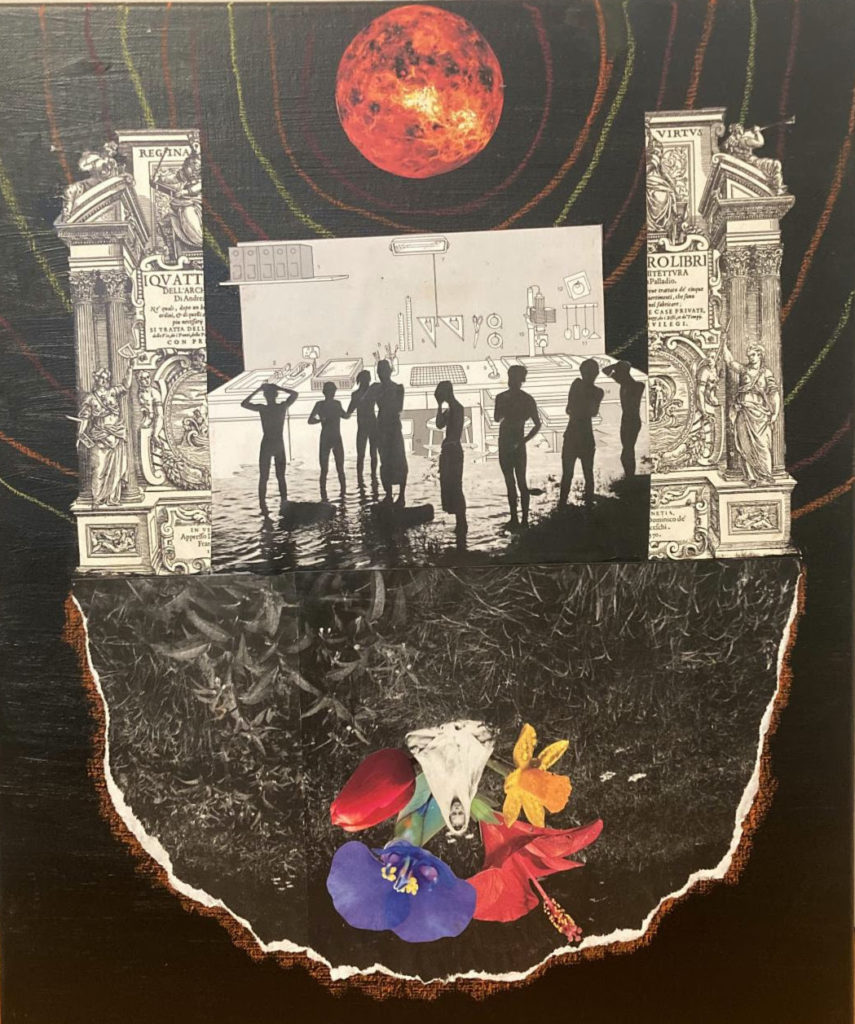 We welcome Marielle Carpentier, our art-therapy intern from Leslie University, who will post about her experiences with common art in the coming year. She writes about her first day here, September 29.
We welcome Marielle Carpentier, our art-therapy intern from Leslie University, who will post about her experiences with common art in the coming year. She writes about her first day here, September 29.
This week I had the great opportunity to lead a table at common art in doing collage. One major attraction of the day was painting pumpkins, which was also a great success. I was worried that the excitement of the pumpkins would mean that I wouldn’t be working with many people, but was happily surprised by how many people joined me. A big part of the success was thanks to artist-in-residence, Allie, for sourcing great magazines and stamps. Often with collage, interest and success can come down to what kind of images are available. I found a big reason the collage table was successful was because people could find images that they could relate to or that inspired them. Once these images are found, the excitement to create something with them begins. I found it interesting to see what inspired each person who came to my table. Some were excited by the detailed stamps, some the images of nature, and some the words in the newspapers. Even with the exciting (and very successful) pumpkin painting, I was so happy to have many people interested in engaging in collage.
I find something so special and successful about common art’s simultaneous diversity of art. I believe deeply in the healing power of art. Each person comes with a unique set of needs and strengths. With a diverse array of art materials we can better serve some of those needs and connect with those strengths. Collage can act as an easy entryway into art making. While it can become very intricate and complicated, it can also just be a way to create a pleasing collection of images the artist is drawn to. Images are free floating until they’re glue down, which encourages thoughtful placing. It also helps those who have anxiety around making choices too quickly. Just like collage, every other art material or approach has benefits for particular needs.


